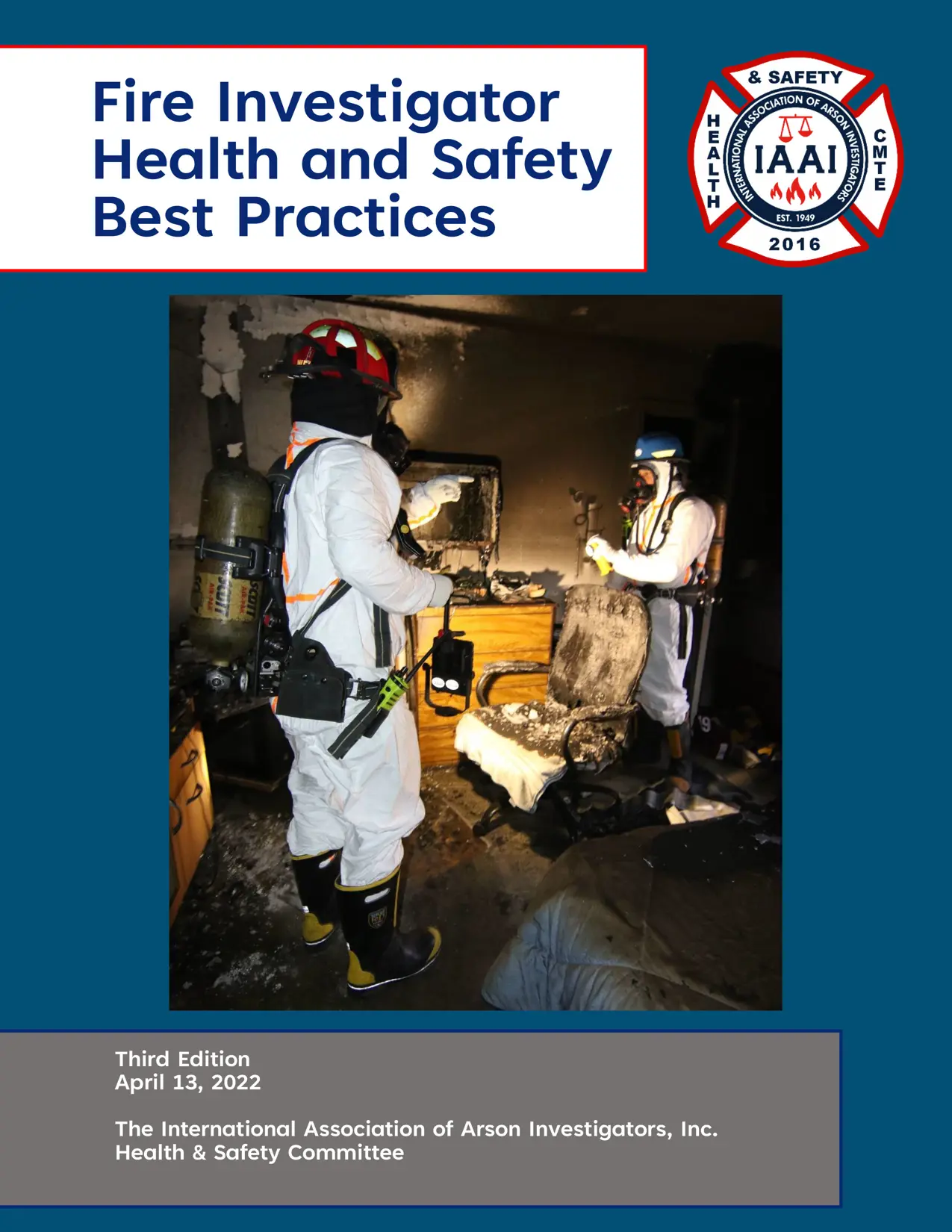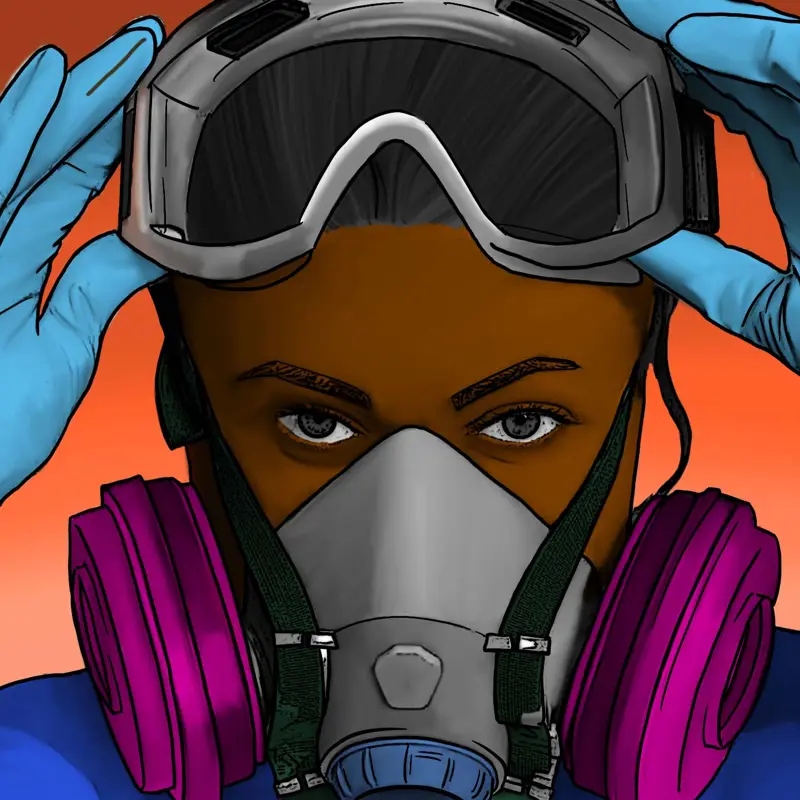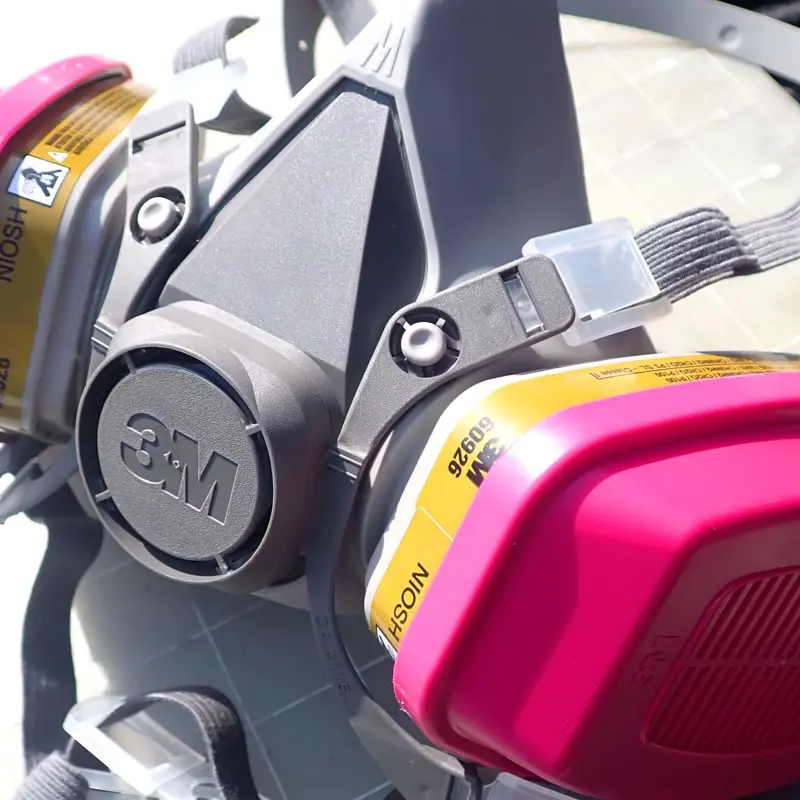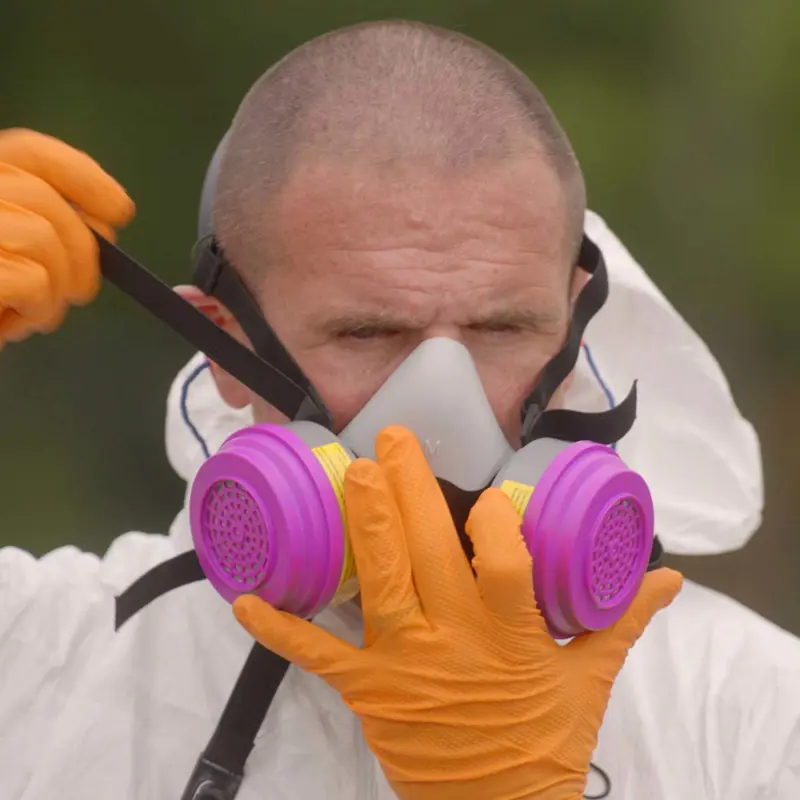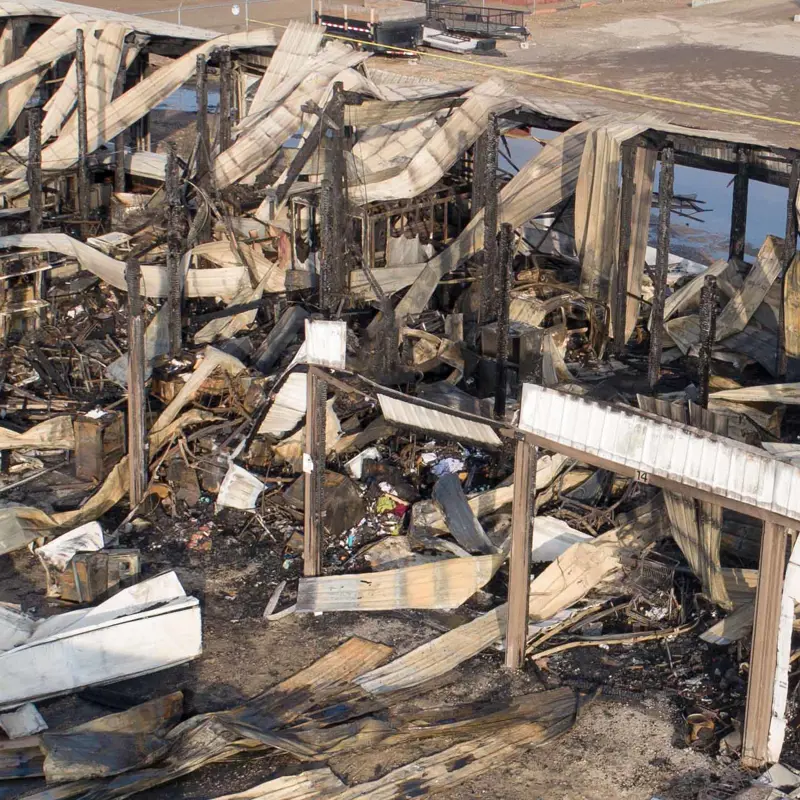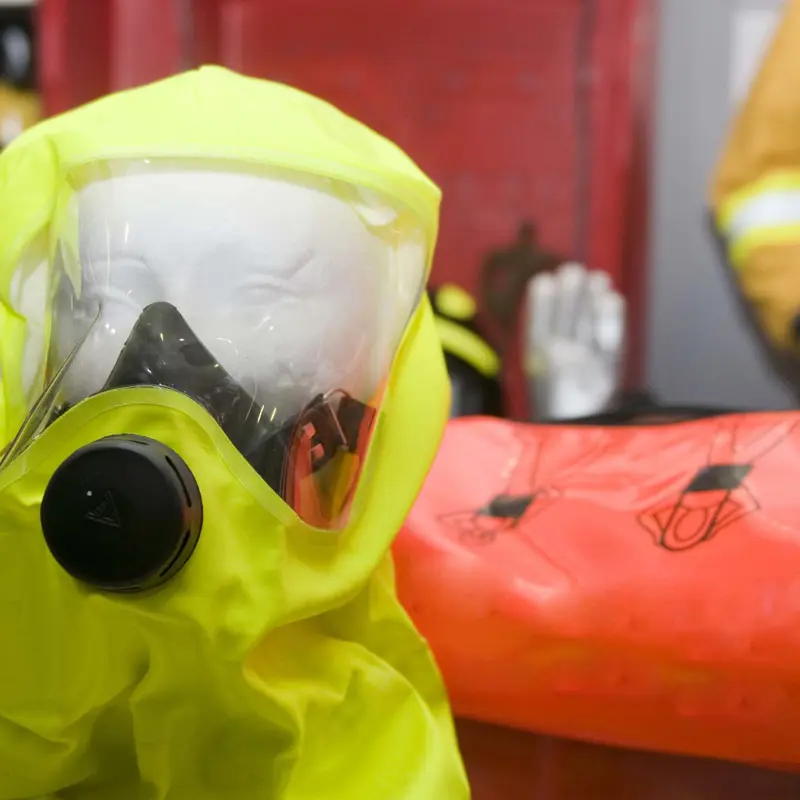Health and Safety
The IAAI is committed to the health and safety of the fire investigation community. The IAAI Health & Safety Committee provides health and safety information and best practice guidelines to promote health and safety knowledge, awareness, discussion, and action among IAAI Members and the fire investigation community in general. The Committee also:
- Provides information and studies to include on the IAAI Member resources website.
- Collaborates with the Advocacy Committee to produce relevant legislative actions.
- Collaborates with the IAAI Training & Education Committee (T&E) to produce training materials and courses on fire investigator health and safety.
- Maintains Working Groups on specific issues in fire investigator health and safety, including mental health and wellness.
Direct questions about the IAAI’s health and safety activities to the Committee Chair Tom Mooney and Co-Chair Michael Brewer.
Fire Investigator Health and Safety Best Practices
The IAAI’s flagship publication in health and safety is Fire Investigator Health and Safety Best Practices, the first-of-its kind peer, technical, and administratively reviewed best practices paper, to help ensure the health and safety of all who attend fire scenes. Fire Investigator Health and Safety Best Practices uses the most current research and information available to identify the practices that fire investigators and fire investigation companies, agencies, and entities should follow when working in and around the post-fire environment. The document can also serve as a training guide and policy template for companies, agencies, and entities who deliver fire investigation services.
Please visit the Fire Investigator Health and Safety Best Practices page to download the latest edition. The document is free.
CFITrainer.Net has six health & safety modules
to assist fire investigators and allied professionals in protecting themselves and others at fire scenes.
(Note: A video version of the module, titled Donning and Doffing Respiratory PPE, is also available)
Health and Safety Information from the NIOSH Center for Firefighter Safety, Health, and Well-Being
- Cancer. NIOSH is actively enrolling firefighters into the National Firefighter Registry for Cancer. This is the largest effort ever undertaken to understand and reduce the risk of cancer among U.S. firefighters.
- Hazardous exposures, including PFAS. NIOSH is exploring the materials burned, fire conditions, and the substances used when putting out fires. These include PFAS in firefighting foam and turnout gear. NIOSH is studying the impact on firefighters' exposures and risk levels.
- Line-of-duty deaths. The NIOSH Fire Fighter Fatality Investigation and Prevention Program conducts independent investigations of firefighter line-of-duty deaths and recommends prevention methods.
- Personal protective equipment (PPE). NIOSH evaluates the PPE structural and wildland firefighters rely on to be safe, including respirators and turnout gear. The NIOSH Respirator Approval Program approves the respirators firefighters use.
- Protecting first responders during public health threats. NIOSH experts rapidly deploy to public health threats to help first responders do their jobs safely and to provide guidance.
- Wildland firefighter safety, health, and well-being. NIOSH works with federal partners to study how the unique conditions and hazards wildland firefighters face impact them physically and mentally. The results help to develop preventive measures to reduce their risk.
Other Health and Safety Publications and Resources
International Association of Arson Investigators, Inc.
Global Leaders in Fire Investigation®
2331 Rock Spring Road
Forest Hill, MD 21050
410-451-FIRE(3473)
800-468-4224

